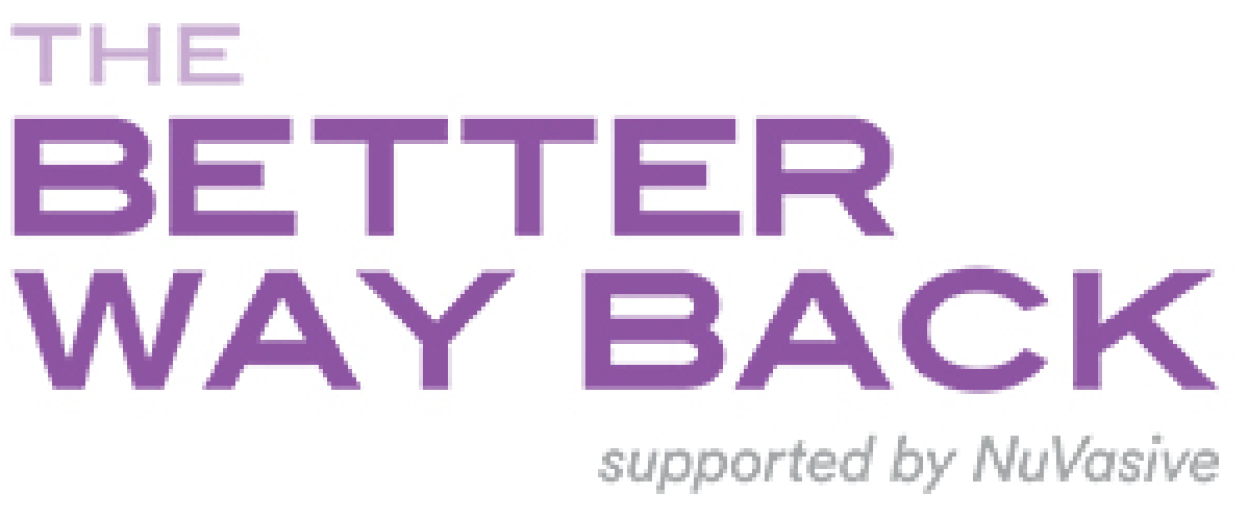This is the fourth in a series of guest posts by Jim Spell, The Better Way Back® Patient Ambassador. Check out part 1, part 2, and part 3.
My name is Jim Spell. I recently had a full lumbar fusion. I am now the proud owner of 18 screws and two rods totaling over two feet. My doctor compares it, with fondness and pride, to the Golden Gate Bridge. While I probably wouldn’t have found this metaphor as funny four months ago, my sense of humor is returning, along with my overall health.
Exercise
Because the healing time was going to be lengthy, I knew that physical therapy was going to be delayed for at least 8 to 12 weeks. The interim would be filled with the simple act of walking. But the act of walking turned out to be not so simple. My legs were beginning to awaken from their slow deterioration and muscles and nerves that had previously chosen to sleep were announcing their presence with an all-encompassing fatigue and pain environment. Much like the soreness experienced after too much physical exercise, I was experiencing that kind of massive discomfort in my legs every time I moved. The thought of actual sustained exercise, even a walk to the gate, seemed a little far-fetched. Logic dictated however, like the tenants of exercise, I had to push through this perpetual irritation if I hoped to get better.
Reinforcing this position was the fact that much like exercise soreness, what I was feeling in my legs was more positive than previous feelings that I had had in my legs prior to the surgery.
So I began to walk. A little at first, walking carefully up and down the road in front of my house. Weak and unsteady, I had no problem accepting the help of hiking poles, specifically designed to stabilize the walking motion. Designed for hikers with heavy backpacks, they were the perfect complement to my determination to increase my walks every day. And walk I did.
I began to look forward to the movement, although still uncomfortable, as I began to feel the benefits. The discomfort in my legs began to diminish even if only after I stopped walking. This seemed to be a good sign and spurred me on to even greater lengths. Going into the second month I was walking between two and three miles a day and had begun to leave my hiking poles at home. I carried a cell phone just in case, as I was walking farther and farther from my house each day. Frankly these walks were the most challenging time of my recovery and even now, four months later, I get sore and tired after every experience. But they are helping as I can see muscle returning to my thighs and calves and the soreness in my knees is exactly what I had before the surgery.
Totally outside the box to most people—but something I am bound to relay—is my unique exercise of the small back muscles. It’s something that I knew from previous surgeries is so important to a full recovery: playing drums. I took great care in sitting down to the set of drums and carefully hit each drum and cymbal. As uncomfortable as it was, it felt liberating somehow and I continued, carefully and deliberately. Not exactly Ginger Baker, but totally content to be a part of something familiar. It was only after I tried it that I got permission from my surgeon to continue carefully, as it appeared to be a very effective way of stimulating all the back muscles that had been “violated” in the surgical process.
Obviously, this exercise is not available to everyone, but it points out the need to find something to connect with on the road to “normal.” Recovery is so deeply profound and all-encompassing, a few minutes a day doing something personal and unique is imperative to the healing process. It could be knitting or bouncing a ball off a wall. Whatever is in your life experience that you can translate into memory movement, however limited, is critical to your well-being. That’s a fact direct from me to you.
13-NUVA-1266
